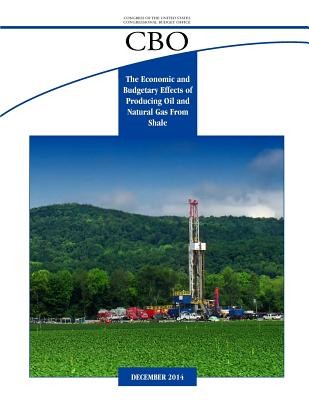
- We will send in 10–14 business days.
- Author: Congressional Budget Office
- Publisher: CreateSpace Independent Publishing Platform
- Year: 2015
- Pages: 48
- ISBN-10: 1511570172
- ISBN-13: 9781511570176
- Format: 21.6 x 27.9 x 0.3 cm, softcover
- Language: English
- SAVE -10% with code: EXTRA
The Economic and Budgetary Effects of Producing Oil and Natural Gas From Shale (e-book) (used book) | bookbook.eu
Reviews
Description
Recent advances in combining two drilling techniques, hydraulic fracturing and horizontal drilling, have allowed access to large deposits of shale resources-that is, crude oil and natural gas trapped in shale and certain other dense rock formations.1 As a result, the cost of that "tight oil" and "shale gas" has become competitive with the cost of oil and gas extracted from other sources. Virtually nonexistent a decade ago, the development of shale resources has boomed in the United States, producing about 3.5 million barrels of tight oil per day and about 9.5 trillion cubic feet (Tcf ) of shale gas per year. Those amounts equal about 30 percent of U.S. production of liquid fuels (which include crude oil, biofuels, and natural gas liquids) and 40 percent of U.S. production of natural gas. Shale development has also affected the federal budget, chiefly by increasing tax revenues.The production of tight oil and shale gas will continue to grow over the next 10 years"by about 30 percent and about 60 percent, respectively, according to a recent projection by the Energy Information Administration (EIA). Another EIA estimate shows that the amount of tight oil and shale gas in the United States that could be extracted with todays technology would satisfy domestic oil consumption at current rates for approximately 8 years and domestic gas consumption for 25.
- Author: Congressional Budget Office
- Publisher: CreateSpace Independent Publishing Platform
- Year: 2015
- Pages: 48
- ISBN-10: 1511570172
- ISBN-13: 9781511570176
- Format: 21.6 x 27.9 x 0.3 cm, softcover
- Language: English English
Recent advances in combining two drilling techniques, hydraulic fracturing and horizontal drilling, have allowed access to large deposits of shale resources-that is, crude oil and natural gas trapped in shale and certain other dense rock formations.1 As a result, the cost of that "tight oil" and "shale gas" has become competitive with the cost of oil and gas extracted from other sources. Virtually nonexistent a decade ago, the development of shale resources has boomed in the United States, producing about 3.5 million barrels of tight oil per day and about 9.5 trillion cubic feet (Tcf ) of shale gas per year. Those amounts equal about 30 percent of U.S. production of liquid fuels (which include crude oil, biofuels, and natural gas liquids) and 40 percent of U.S. production of natural gas. Shale development has also affected the federal budget, chiefly by increasing tax revenues.The production of tight oil and shale gas will continue to grow over the next 10 years"by about 30 percent and about 60 percent, respectively, according to a recent projection by the Energy Information Administration (EIA). Another EIA estimate shows that the amount of tight oil and shale gas in the United States that could be extracted with todays technology would satisfy domestic oil consumption at current rates for approximately 8 years and domestic gas consumption for 25.


Reviews